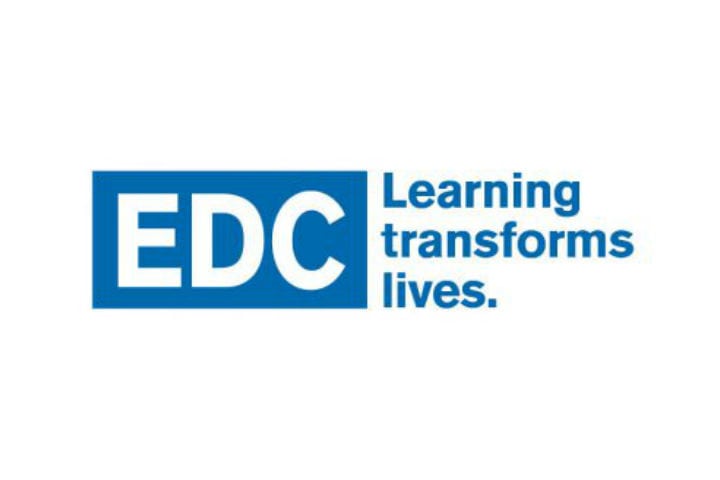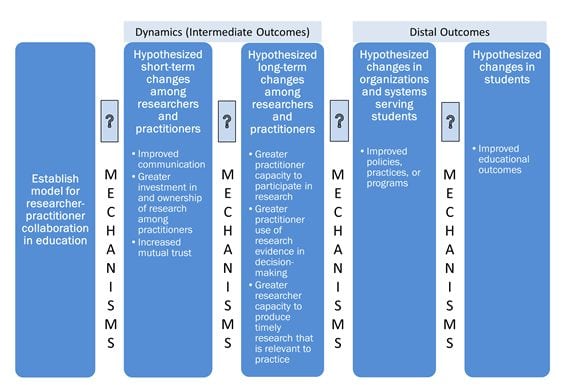Education Development Center (EDC) Senior Research Associate Sarah Ryan brings expertise in policy research, program evaluation, and effective approaches to promoting college and career readiness, including student-centered and personalized approaches to secondary education. In this post, Sarah discusses the need to better understand the conditions under which researcher-practitioner collaboration yields the kinds of positive and sustained changes necessary to effectively support student success. Follow EDC on Twitter at @EDCtweets.
From the U.S. Department of Education to state and local education agencies, and from university-based schools of education to private philanthropic foundations, support for better collaboration among researchers and practitioners has steadily increased (Tseng, 2012). Renewed interest in promoting greater collaboration between researchers and practitioners is grounded in the belief that such efforts can spur more widespread use of rigorous research evidence in educational policy and practice (Deeds, 2016).
Over the past five-plus years, we have had the opportunity to participate in formal researcher-practitioner partnerships and alliances through our role with the Regional Educational Laboratory Northeast & Islands (REL-NEI), one of 10 Regional Educational Laboratories (RELs) funded by the Institute of Education Sciences. Since 2012, the RELs have been intentionally designed to support formal avenues for researcher-practitioner collaboration with the goal of bridging the divide between educational research and practice. Based on our experiences, we have come to appreciate the need for a more developed theory of change that could facilitate both improved practice within and a more robust body of research about a new generation of collaborative models. As the field of education embraces the potential of researcher-practitioner collaboration for raising the iron curtain said to separate researchers and practitioners (Cousins & Simon, 1996), we believe it is equally important to understand how and whether these efforts are influencing those involved—including students.
Building Knowledge about the Dynamics and Outcomes of Researcher-Practitioner Collaboration
The figure below illustrates the basic theory of change suggested by the current literature on various models for researcher-practitioner collaboration. However, we still have a lot to learn about whether and how intermediate outcomes reflecting collaborative dynamics lead to improved outcomes, including better educational practices and programs, and, ultimately, improved student performance (Coburn & Penuel, 2016).
Basic Theory of Change Suggested by Current Literature on Researcher-Practitioner Collaboration. Source: Author.
It also seems likely that this basic theory of change may vary depending on the particular collaborative model, whether a partnership, an alliance, a networked improvement community, or some other model (Coburn, Penuel, & Geil, 2013). These different models vary along a number of dimensions (Wagner, 1997), including the research question(s) of interest, the nature of the research process, the context and role of researchers and practitioners, and the assumed mechanisms for changing outcomes.
Researcher-practitioner collaboration through the RELs sometimes occurs through alliances that transcend district and even state boundaries based on shared stakeholder interests and needs. Findings from research carried out through these cross-sector alliances may be directly relevant to practice and policy in the particular context(s) studied, but the goal is to generate new information that will be useful in many contexts and also to provide a model for studying the issue in stakeholders’ own local contexts. While many researcher-practitioner partnerships are situated in mid- and especially large-sized urban districts, this cross-sector alliance model is particularly important because it allows the REL program to facilitate formal researcher-practitioner collaboration with small and rural districts that might not otherwise have access to this kind of engagement with researchers and other practitioners.
In other instances, collaboration takes the form of a partnership with a state education agency or with one or more local education agencies within a state. Although the findings from research carried out through such partnerships are often informative elsewhere, the primary goal is to generate evidence that will inform decisions about a specific change to policy or practice within a particular context.
Ultimately, to provide the greatest support for the greatest number of stakeholders, the REL alliances and partnerships encompass not only different initial levels of individual and organizational capacity for collaboration, but they also represent different individual and organizational interests and needs. In our experience, this variability has implications for both the dynamics and outcomes of the partnership or alliance. In particular, the diversity in the nature and composition of REL partnerships and alliances has raised questions for us about what it means for an RPP to “work.” A more clearly articulated theory of change for researcher-practitioner collaboration in education could inform this question, and others.
Looking Ahead
Enthusiasm for a new generation of researcher-practitioner collaboration in education continues to grow. So, too, should the body of research that helps us better understand the dynamics and outcomes of different collaborative models. To be sure, this body of research exists and is growing. The W.T. Grant Foundation has long supported scholarship on improving the use of research evidence among practitioners and policy makers. Other recent examples include several descriptive studies from the National Center for Research in Policy and Practice, as well as a new report from our REL colleagues (Scholz, Ehrlich, & Roth, 2017) on the challenges that arise in the context of collaborative research.
Yet, our experiences over the past five years working in partnership with stakeholders across the REL-NEI region also highlight questions that have received less attention. For instance:
- Are particular intermediate outcomes among practitioners and/or researchers (e.g., better communication, mutual trust) more strongly associated with changes in practice and/or student outcomes? If so, what are the collaborative dynamics that appear to facilitate these intermediate outcomes?
- If it is important to understand whether improved collaboration among researchers and practitioners leads to better student outcomes, what are the research designs and methods most likely to yield valid and reliable results when attempting to link researcher-practitioner collaboration to student outcomes?
- Given the relational dimensions of researcher-practitioner partnerships, are there particular implications for protecting these often fledgling relationships even as we endeavor to understand whether, when, and how partnerships produce successful outcomes?
- How might both researchers and practitioners be involved in research addressing these questions?
Accumulating evidence suggests that the campaign to improve research rigor in education has been insufficient for ensuring that the findings will be used by practitioners and policymakers (Tseng, 2012). In response, there has been renewed interest in promoting greater collaboration between researchers and practitioners in the hopes that such efforts can spur more widespread use of rigorous research evidence in making decisions about educational practice, or even about educational policies at the state or federal level. We must remain mindful, however, of the fact that a collaborative approach to addressing policy and practice challenges in education requires significant personal investment, and often some level of personal risk, among all participants. Within this context, it is all the more critical that we continue to consider under what conditions researcher-practitioner collaboration yields the kinds of positive and sustained changes among researchers and practitioners necessary to effectively support student success.







